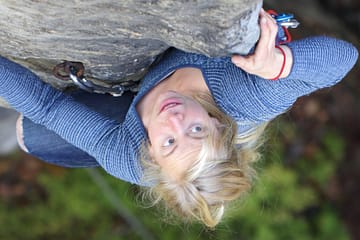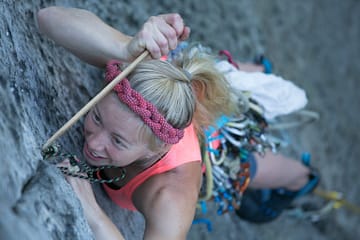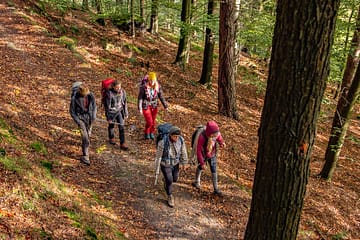“They’re loud people. And I’m not,” he said. I took a mental note to be one of the quieter versions of myself while climbing with this librarian slash climber. He has a point, though. There are mellow
I’m not a slackliner or highliner per se, but I have spent time with the community in Oregon in 2010 and 2011, in Berlin, Germany in 2013 and 2014, in Turkey at the Turkish Highline Carnival (THC) in 2016 and 2017, in Canada at SlacklifeBC’s 2018 Highline Fest in Squamish, in Mexico at Potrero en las Alturas 2018, and so on. I started slacklining when I was 12 and first walked on higher lines near Smith before the
Nevertheless, I find both the act of highlining and the community itself valuable and unique.
Many climbers disagree. Somehow, I’ve been privy to numerous conversations ragging on these wild wiggly bridge walkers. I break down the criticisms of highlining into two broad categories: it is not complex enough to have merit and the people are just too much.
So here’s my response, a windstorm of thoughts in defense of the highliner from my perspective as a climber. The aspects of highlining that distinguish it from other borderline sports are subtle, even if the leggings aren’t. At least they aren’t as obvious to me as what draws some people
Note: I wrote this a while ago and let it sit. Between then and now, two teams of highliners came together to build a bridge between Mexico and the United States. I’m lucky enough to know slackliners on both sides who were part of this project. The film is still in process, but the trailer can be found in this interview with Outside Online and you can sign up for updates on the project here.
Merit can be derived from many sources. What I personally appreciate most about slacklining is that I feel I am strengthening my proprioception and ability to force my mind into a sense of strong-willed calm. The solid conscious or subconscious understanding of one’s center of gravity that slacklining both utilizes and cultivates is a critical skill for climbers and anyone wanting to be active. Highlining requires balance without the use of the same kind of visual input we’re used to near the ground or stable rock. Crossing any length of line close to the ground or high in the sky takes breathing, focus, and muscle, just like climbing.
One of the defenses of
While I have enjoyed slacklining the most when surrounded by friends, under the sun on the grass, I feel very solitary when walking. And so, when I returned to the community after few years of city life, I found the new slackline-festival crowd’s flamboyancy to be a bit incongruent at the outset. How is it that these people, who explain they experience a meditative-like state where everything else melts away while on the line, are just so darn outgoing on the ground? And yet here I am, a talkative, bouncy person, driving my truck into the hills so I can spend hours alone in the quiet. My guess, and perhaps I’m just attempting to toot my own horn here, is that they’re multi-faceted.
Not all climbers seek to progress up the grades as long as possible, many are content to challenge themselves at a fluctuating, naturally occurring level in new and visually inspiring natural settings. To say that slacklining lacks depth of progression is misleading, as a young activity, the potential for innovation is immense. Yet, the drive will always come from the walker, each slackliner receives their own individualized reward. Slacklining doesn’t pull me like climbing does, and so I am sure there are thousands of other aspects of the activity, grand and miniscule, that draw people on to the webbing to be fed and nourished and spit off as new converts.



1 Comment
Sennager · March 29, 2019 at 6:11 pm
In general I believe that everyone should live and let live, that’s the beauty of tolerance and acceptance. I guess where it gets murky is when someone else’s passion impacts your own, such as loud highliners (or climbers) whooping and screaming when someone prefers the natural peace of nature. I think you’ll never please everyone, but as someone said to me, “My aim is to not make anyone’s life worse.”
Comments are closed.